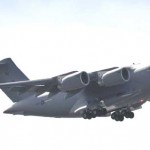Even as the IAF prepares for the great leap into the next generation it must be realised that to erect an edifice there is the imperative of foundation. Visions of a powerful modern Air Force are undoubtedly inspiring but can the IAF really fulfill its mandate of ‘Touch The Sky With Glory’ when its flying training infrastructure is languishing without a basic trainer since August 2009 with as yet no new induction in sight.
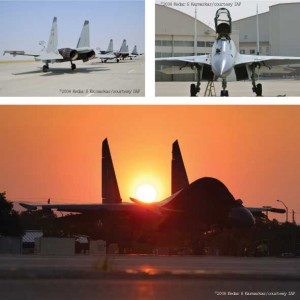 The scenario, for a nation aspiring to be a regional power, is not very inspiring.
The scenario, for a nation aspiring to be a regional power, is not very inspiring.
Obsolete or Obsolescent?
Earth shattering announcements by the top brass of the Indian Air Force (IAF) appear to have become routine during media interactions which are an integral part of the agenda for Air Force anniversary celebrations. And so it was on the 78th anniversary of the IAF in October last year, Air Chief Marshal PV Naik, Chief of the Air Staff (CAS), created quite a stir when he told the media that, “50 per cent of the assets of the IAF were obsolete.”
Even though the pathetic state of the IAF inventory has not really been a closely guarded secret for some time now as it has often been a subject of public debate, a candid admission by the CAS of the state of affairs, brought the issue once again to the fore and triggered a fresh wave of concern across the nation. Across our western borders, Pakistani defence analysts dismissed the statement by the CAS as merely a ploy to pressurise the government to hasten the process of acquisition of lethal weapon systems which, as per them, India already possesses well beyond her legitimate needs.
Indias military power must grow in conformity with its rising global economic status to ensure peace, security and stability in the region and safeguard national economic and security interests
Back home, the somewhat embarrassing expose also resulted in the initiation by the establishment of a damage control exercise that was bereft of both conviction and credibility. The public was expected to believe that the assets of the IAF that were purported by the CAS to be obsolete were in fact only “tending towards obsolescence” and were very much “useable”.
It was also stated that the government was taking all necessary and possible steps to ensure that national security was in no way compromised. In essence, the message was that all was well with the IAF and that the organisation was moving in the right direction to be ready to meet with the challenges in the future. But is it?
India – a Regional Power
As widely acknowledged, the 21st century belongs to Asia and given its resurgent economy, India is expected to be a major economic power in the region by the middle of the century, a status that will undoubtedly confer additional responsibilities on the nation. It is important therefore that India’s military power must grow in conformity with its rising global economic status to ensure peace, security and stability in the region and safeguard national economic and security interests that would transcend its land and maritime borders and extend from the Persian Gulf to the Strait of Malacca.
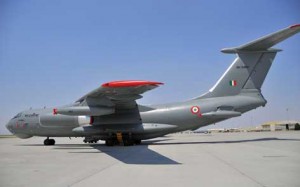 India is already regarded as a nuclear power and in all probability, is moving forward to develop a credible second strike capability in due course. However, its conventional forces that have historically been cast in a defensive mould owing to a legacy of our cultural heritage and moral values, would have to be restructured, reequipped and reoriented for a proactive role with the capability to project military power decisively in areas of interest. The question that ought to agitate the public mind therefore is whether the government is actually “taking all necessary and possible steps” to provide the IAF with the wherewithal in a respectable timeframe so that it is in a position to fulfill national aspirations.
India is already regarded as a nuclear power and in all probability, is moving forward to develop a credible second strike capability in due course. However, its conventional forces that have historically been cast in a defensive mould owing to a legacy of our cultural heritage and moral values, would have to be restructured, reequipped and reoriented for a proactive role with the capability to project military power decisively in areas of interest. The question that ought to agitate the public mind therefore is whether the government is actually “taking all necessary and possible steps” to provide the IAF with the wherewithal in a respectable timeframe so that it is in a position to fulfill national aspirations.
Is the IAF Prepared?
A peek into the mind of the Indian government was available recently during the 13th Asian Security Conference in New Delhi where AK Antony, the Defence Minister said that while China’s growing military strength and their ever increasing expenditure on defence were issues of concern, there was no reason to be unduly worried. However, the Defence Minister did acknowledge the need for the nation to modernise the armed forces so that they are prepared to meet any threat in the future. More recently, addressing the media in Siliguri in the second week of March 2011, the CAS said, “The IAF is well equipped and ready to face any situation as and when it is required.” However, he went on to add that the IAF was in the process of buying weapon systems and equipment that ought to have procured a decade ago.
“¦the nation would require at the very least a combat fleet of 45 squadrons equipped with modern aircraft to be able to contend with the simultaneous onslaught of both the adversaries”¦
In the utterances of the political and military leadership in the last six months one can not only discern a tinge of complacency but also be inclined to infer that the IAF is neither fully geared to meet with challenges today nor is there any certainty of it being capable of being so in the foreseeable future.
Combat Power of the IAF
There may be some merit in the view held by experts that as the world moves towards globalisation and economic integration, the chances of open and large scale conflicts between nations would recede. However, a nation, especially if economically prosperous, may render itself vulnerable to exploitation or manipulation by one that is militarily stronger. To play a meaningful role in the comity of nations and for the exercise of political influence internationally, it is essential to complement economic power and diplomacy with deterrent military might since it would not be possible to negotiate successfully in the regional or global arena from a position of weakness.
If India is to go on the offensive against one of the adversaries and fight a holding action against the other, the assessment is that it will require a combat fleet of at least 50 squadrons.
China is emerging as a rival in the region economically and militarily. She is becoming a threat to Indian interests not just by herself but more dangerously in collusion with Pakistan. As assessed by the IAF, the nation would require at the very least a combat fleet of 45 squadrons equipped with modern aircraft to be able to contend with the simultaneous onslaught of both the adversaries in a strategically defensive posture.
As per reports in the media, the government plans to enhance the combat fleet strength of the IAF to 42 squadrons. However, well on the road to emerging as a regional power, the nation can no longer bask in the comfort of a self imposed moratorium against proactive approach or expeditionary action. If India is to go on the offensive against one of the adversaries and fight a holding action against the other, the assessment is that it will require a combat fleet of at least 50 squadrons.
From a purely military perspective, since the Second World War, air power has always played a predominant role in major conflicts. The outcome of wars in the future in all likelihood, will be in favour of the side that has the ability to exploit the full potential of aerospace power of which the combat fleet is and will continue to be the spearhead.
Unfortunately, over the last decade, the number of fighter squadrons in the IAF has reduced from the authorised strength of 39.5 to 28. The strength of combat squadrons is likely to decline further as the older versions of MiG21 aircraft are phased out without ready replacement.
The combat fleet would constitute the core capability of the IAF, backed by range of support elements: ground-based, airborne and space based surveillance systems; efficient and secure communication networks; state-of-the-art air defence weapon systems; strategic and tactical airlift capability, both fixed and rotary wing; network-centric warfare capability; and force multipliers such as Flight Refuelling Aircraft and Unmanned Aerial Systems. It is also important that both the combat fleet of the IAF and the supporting elements grow in tandem in strength and capability.
Unfortunately, over the last decade, the number of fighter squadrons in the IAF has reduced from the authorised strength of 39.5 to 28. The strength of combat squadrons is likely to decline further as the older versions of MiG21 aircraft are phased out without ready replacement. Even after the IAF receives its full complement of Su30 MKI by 2014 as planned, the strength of the combat fleet is unlikely to be restored to its currently authorised level unless there is timely induction of new fleets. Although the Light Combat Aircraft (LCA) Tejas has received Initial Operational Clearance, it is still at least seven years away from Final Operational Clearance.
Besides, the Tejas Mk I is grossly underpowered and as it does not measure up to the performance parameters stipulated by the IAF, the aircraft has been ordered only in limited numbers.
| Editor’s Pick |
The Mk II version of the Tejas will have a new engine, the US GE F414 which has the required thrust rating but would involve extensive redesign work on the airframe. In effect the Tejas Mk II on account of a redesigned airframe would practically be a new aircraft and in all probability, would require a fresh series of developmental flights and fresh operational clearance.
The Tejas Mk II project being infinitely complex and given the experience with Tejas Mk I, the time frame for its completion cannot be predicted with any degree of certainty. It would therefore not be prudent for the IAF to compute force levels and operational capability based on the availability of the Tejas Mk I or Mk II – assurances by the industry notwithstanding.
Whither MMRCA?
That leaves the IAF with one seemingly viable option – induction of six squadrons of Medium Multi-Role Combat Aircraft (MMRCA). With the need for replacement of the MiG21 FL fleet becoming acute and interminable delay in the Tejas programme, the case for 126 light weight (14 to 20 tons) air defence aircraft was initiated by the IAF in 2001. The proposal was subsequently modified to include heavy aircraft with multi-role capability and weight limit raised to 25 tons to go beyond the air defence role to power projection.
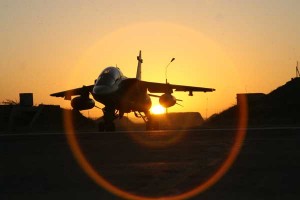 However, the logic of projecting a requirement of another heavy multi-role aircraft at that point in time is difficult to comprehend especially as the heavy weight category top-of-the-line multi-role fighter aircraft, the Su30 MKI, had already been contracted for and was to be license produced in large numbers within the country. However, even though the requirement for the MMRCA was projected as “urgent”, it took the government six years just to issue the Request for Proposal (RFP). Another four years have gone by since then, and the commercial bids that have already been revised once are yet to be opened.
However, the logic of projecting a requirement of another heavy multi-role aircraft at that point in time is difficult to comprehend especially as the heavy weight category top-of-the-line multi-role fighter aircraft, the Su30 MKI, had already been contracted for and was to be license produced in large numbers within the country. However, even though the requirement for the MMRCA was projected as “urgent”, it took the government six years just to issue the Request for Proposal (RFP). Another four years have gone by since then, and the commercial bids that have already been revised once are yet to be opened.
There is clearly a gross mismatch between the perceptions of the IAF and the controlling civilian establishment in respect of both necessity and urgency of inducting the MMRCA. The selected vendor is likely to take at least three years after the award of contract to deliver the first aircraft. At this stage, as the date of opening of commercial bids is not known, it is difficult to estimate the time frame for finalisation of the tender.
“¦even though the requirement for the MMRCA was projected as “urgent”, it took the government six years just to issue the Request for Proposal (RFP). Another four years have gone by since then”¦
However, after the commercial bids are eventually opened, the decision makers will be confronted with a new dilemma – that of resolving the conflicting paradigms of cost and political compulsions. For a government struggling to extricate itself from the quagmire of scams unearthed in quick succession in the recent past, this exercise involving an outlay of over $10 billion (Rs 45,000 crore) may be a sensitive one and somewhat difficult if not impossible to finalise in the remaining three years of its tenure.
Then there is a possibility of dissatisfied vendors resorting to legal action that might derail or even scuttle the process, a possibility referred to by the CAS during a media briefing at Yelahanka while visiting Aero India 2011. Clearly, there are a number reasons that might impede the progress of the MMRCA tender, but inordinate delay in the finalisation of the contract, may render not only the commercial bid irrelevant; but could well result in the aircraft in the race and especially their avionics and other systems to be overtaken by obsolescence. As the IAF would not like the MMRCA to be outclassed by its adversaries in the next war, induction of a weapon system in a state of or approaching obsolescence is unlikely to be palatable to the organisation.
The IAF may therefore seek upgrade of certain systems before induction – an option that would be accompanied by substantial escalation in cost necessitating comprehensive review of the project, revised financial sanction and consequent delay. In the final analysis, it is not beyond the realm of possibility that the MMRCA may turn out to be no more than a fading dream for the IAF.
The Fifth Generation Fighter Aircraft
While there may be dark clouds looming over the MMRCA dream, what appears to be more of a reality is the possibility of a giant leap by the IAF into the next generation through the $25 billion (Rs 112,500 crore) deal with Russia for the Fifth Generation Fighter Aircraft (FGFA). As the operational doctrine of the IAF calls for multi-role combat aircraft to be of twin-seat, this project involves redesign of the single seat Sukhoi T50 also referred to as the Prospective Airborne Complex – Frontline Aviation (PAK FA).
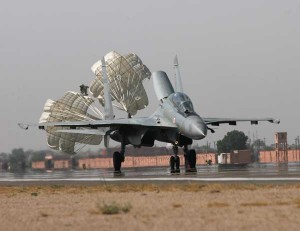 Over the last 13 months, Sukhoi has launched two prototypes of the T50. Very recently, a design team from Hindustan Aeronautics Limited (HAL), along with the engineers from the Sukhoi Design Bureau, has begun work in Russia on the stretched twin-seat version for the IAF. However, hopes of the twin-seat FGFA being ready for induction by 2017, appear somewhat over optimistic. Incidentally, the proposal for the joint development of the FGFA was discussed between the Russian President Vladimir Putin and the Indian Prime Minister Dr Manmohan Singh and a preliminary agreement signed when the former was hosted as Chief Guest at the Republic Day Parade at New Delhi in January 2007.
Over the last 13 months, Sukhoi has launched two prototypes of the T50. Very recently, a design team from Hindustan Aeronautics Limited (HAL), along with the engineers from the Sukhoi Design Bureau, has begun work in Russia on the stretched twin-seat version for the IAF. However, hopes of the twin-seat FGFA being ready for induction by 2017, appear somewhat over optimistic. Incidentally, the proposal for the joint development of the FGFA was discussed between the Russian President Vladimir Putin and the Indian Prime Minister Dr Manmohan Singh and a preliminary agreement signed when the former was hosted as Chief Guest at the Republic Day Parade at New Delhi in January 2007.
| Editor’s Pick |
It has taken four years to actually kick-start the project and given the pace so far, the IAF may be fortunate if the FGFA fleet is operational by 2030! By this time the Mirage 2000 whose upgrade is still uncertain, the Mig21 Bison, the MiG 27 and the MiG 29 would have either been phased out or relegated to a tertiary role. And if the MMRCA deal does not go through for any reason, the IAF would be left with only the Su30 MKI as the primary strike element with a few Tejas Mark I confined to air defence role.
Even as the IAF prepares for the great leap into the next generation it must be realised that to erected an edifice there is the imperative of foundation. Visions of a powerful modern Air Force are undoubtedly inspiring but can the IAF really fulfill its mandate of “Touch The Sky With Glory” when its flying training infrastructure is languishing without a basic trainer since August 2009 with as yet no new induction in sight. The scenario, for a nation aspiring to be a regional power, is not very inspiring.




